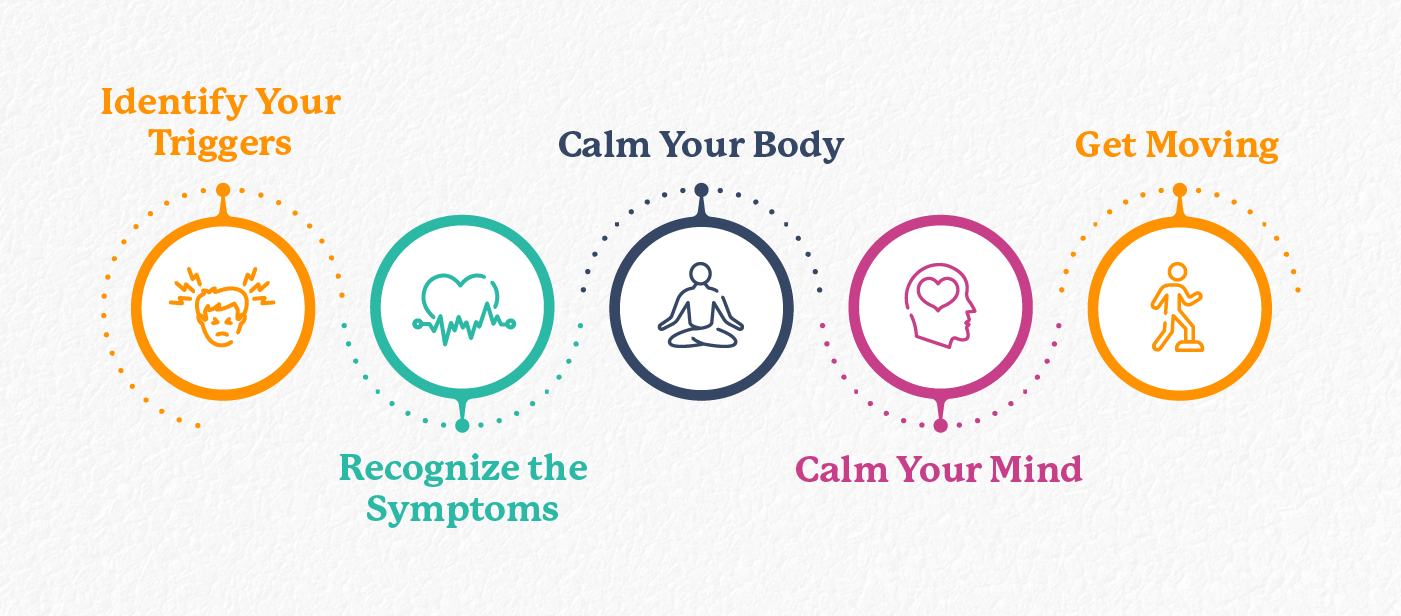5 Steps to Manage Panic Attacks and Regain Control
Panic attacks can be one of the most distressing experiences, often coming with physical and mental symptoms that feel overwhelming. While everyone experiences anxiety occasionally, it can escalate into panic or even persistent panic attacks for some. Understanding and addressing these episodes is critical for your well-being.
In this blog, we’ll outline five practical steps to help you catch the signs of a panic attack early and work through the discomfort effectively.

1. Identify Your Triggers
The first step is recognizing the thoughts, feelings, or situations that might lead to a panic attack. Common triggers can include financial stress, health concerns, or fear of the unknown. By identifying patterns in your anxiety, you can prepare yourself to manage the onset of symptoms.
2. Recognize the Symptoms
Knowing what to watch for can help you intervene early. Common physical symptoms include:
- Increased heart rate
- Shortness of breath
- Tightness in the chest
- Dizziness or sweating
Psychological signs often involve feelings of panic, dread, or a fear of losing control. Research shows that shortness of breath and an increased heart rate are among the most common initial signs of a panic attack. Identifying these early can minimize the severity.
3. Calm Your Body with Deep Breathing
Anxiety often leads to shallow, rapid breathing. To calm your body, practice slow, deep breaths using your diaphragm. A simple technique:
- Inhale for 3 seconds
- Hold your breath for 3 seconds
- Exhale for 3 seconds
Repeat this process 10 times to lower your heart rate and blood pressure. If you’re in public, discreetly focus on breathing a little slower and deeper than usual.

4. Calm Your Mind with Positive Self-Talk
What you say to yourself during a panic attack matters. Replace negative thoughts with calming affirmations like:
- “I can handle this.”
- “This feeling will pass.”
- “It’s just a wave, and it will come down.”
These phrases can help you ride the wave of anxiety and regain control.
5. Get Moving
When panic hits, your body releases adrenaline, which can amplify your symptoms. Physical movements, such as walking or even more vigorous exercise, can help burn off this excess adrenaline and create a sense of calm. Aim for 10–15 minutes of activity whenever possible to ease your symptoms.
Need Help Managing Panic Attacks?
If you find it challenging to implement these steps on your own, don’t hesitate to reach out for professional support. At Sullivan + Associates Clinical Psychology, we’re here to help you regain control and improve your quality of life. Contact us today.
For more insights and strategies, watch our video: